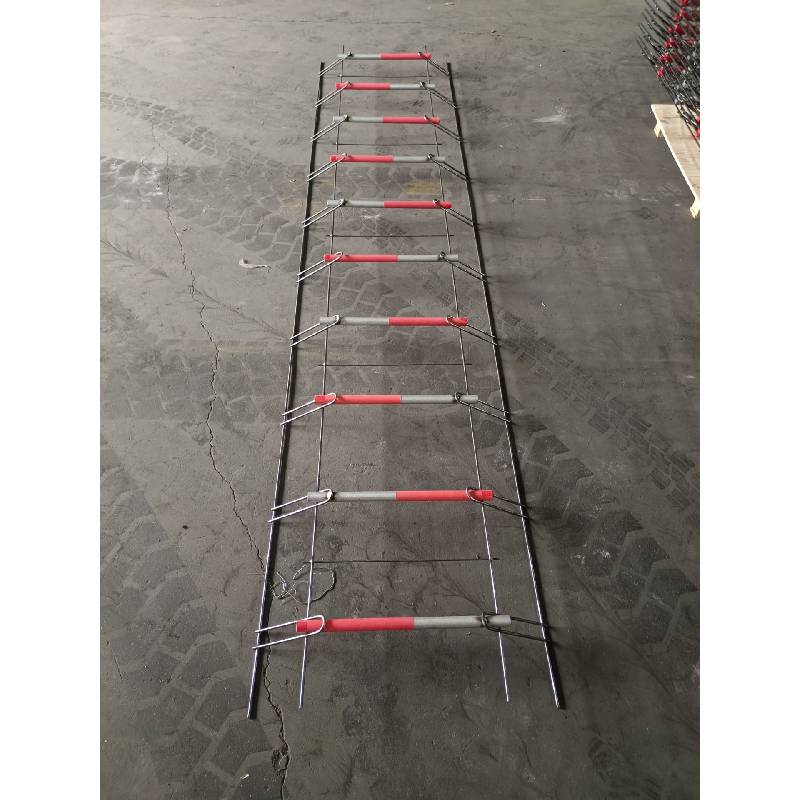
- Mobile Phone
- +8613931874955
- sales@cntcmetal.com
Understanding the Purpose and Function of Wall Ties in Construction
What Is a Wall Tie?
A wall tie is a crucial component in the construction and maintenance of buildings, particularly in masonry structures. These ties are used to connect two vertical walls, often made of brick or block, without physically merging them into a single unit. Understanding wall ties and their function is essential for both construction professionals and homeowners concerned about the structural integrity of their buildings.
Function of Wall Ties
The primary role of wall ties is to provide stability and support to cavity walls. Cavity walls are composed of two layers—an outer skin and an inner skin—separated by a space or cavity. This design improves thermal insulation and moisture resistance. Wall ties serve to anchor the two layers together, allowing them to act as a single unit, transferring loads and resisting wind pressure and other forces while also allowing for slight movements.
Without wall ties, the outer layer of a cavity wall could detach or bow outwards, compromising the overall stability of the structure. Therefore, proper installation and maintenance of wall ties are crucial for the longevity and safety of masonry buildings.
Types of Wall Ties
Wall ties come in various types, each suited for specific building materials and construction methods. The most commonly used wall ties include
1. Metal Wall Ties Typically made from stainless steel or galvanized steel, metal wall ties are durable and resistant to corrosion. They are often used in both residential and commercial buildings.
2. Plastic Wall Ties These ties are lightweight and resistant to corrosion, making them suitable for environments where chemical reactions may occur. They are commonly used in modern construction practices.
what is a wall tie?

3. Composite Wall Ties Combining the properties of metal and plastic, composite wall ties offer strength and resistance to corrosion and thermal movement. They are gaining popularity due to their enhanced performance.
4. Brick Ties Specifically designed for use with brick veneers, these ties create a secure connection between the veneer and the supporting wall, ensuring stability while allowing for movement.
Installation Considerations
When installing wall ties, several factors must be considered to ensure their effectiveness. The spacing of the ties is critical; industry standards typically recommend that ties be spaced at intervals of no more than 600mm vertically and 450mm horizontally. Additionally, ties must be placed at each level of the wall to provide continuous support throughout the structure.
Moreover, wall ties should be installed with care to avoid compromising the insulation and moisture barriers of the cavity wall. Any gaps or misalignments can lead to thermal bridging or moisture ingress, which may result in structural damage or mold growth.
Maintenance and Inspection
Regular inspections of wall ties are essential to ensure their ongoing effectiveness. Signs of deterioration, such as rusting or corrosion of metal ties or cracking in plastic or composite ties, should be addressed promptly. Homeowners and building managers should also be vigilant about checking for wall bulging, which may indicate that the ties are no longer properly supporting the wall structure.
In conclusion, wall ties play an indispensable role in the integrity and longevity of masonry buildings. Their functions of connecting and stabilizing cavity walls are vital for ensuring that these structures can withstand various environmental challenges while providing safety and comfort to occupants. Regular maintenance and proper installation are key to preserving the effectiveness of wall ties, ultimately contributing to the durability of any masonry construction. Understanding the significance of these components empowers both builders and homeowners to take proactive steps in safeguarding their properties.
share:
-
Why Sacrificial Formwork Is Redefining Underground ConstructionNewsJun.06,2025
-
The Structural Dynamics of Modern Concrete: How Snake Spacers Revolutionize Flexible ReinforcementNewsJun.06,2025
-
Snake Spacers Smart-Lock Concrete Reinforcement with Surgical PrecisionNewsJun.06,2025
-
Snake Spacers: Reinforcement Precision for Modern Concrete ProjectsNewsJun.06,2025
-
Snake Spacers Powering Concrete's Structural DNANewsJun.06,2025
-
Slither into Success: Snake Spacers' Precision Bite for Unbreakable ReinforcementNewsJun.06,2025
-
Sacrificial Formwork: Building Stronger, Faster, and Safer StructuresNewsJun.06,2025



















